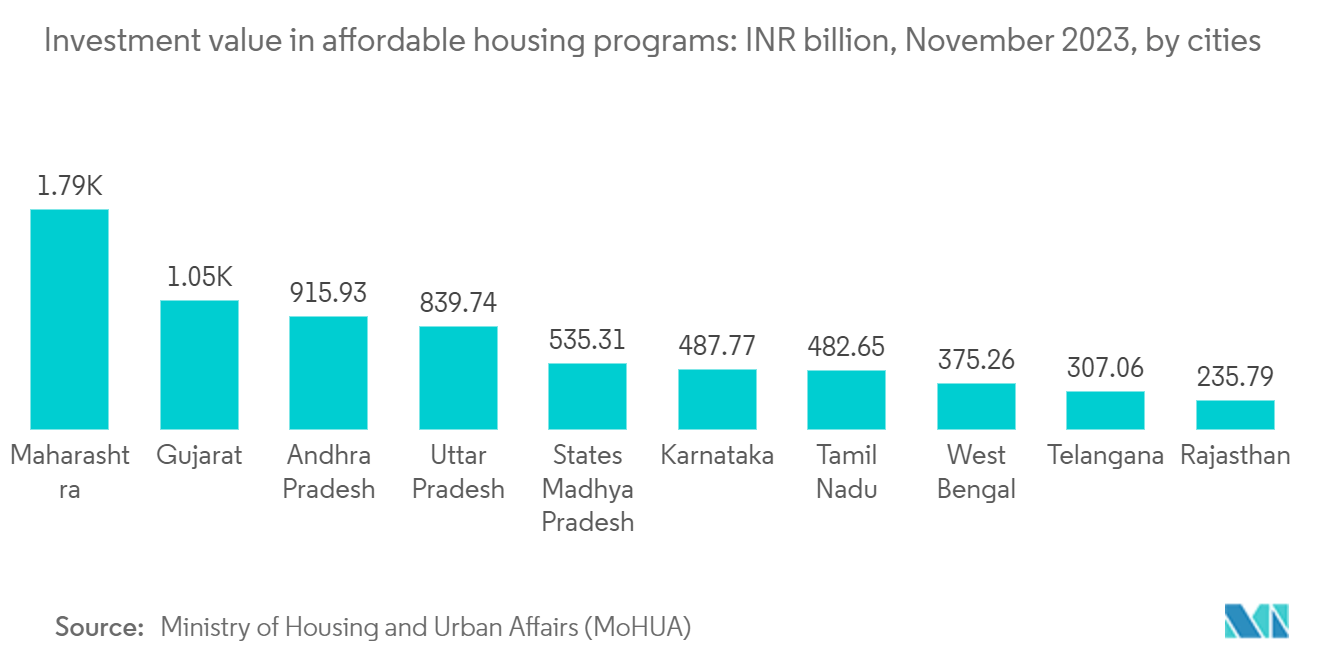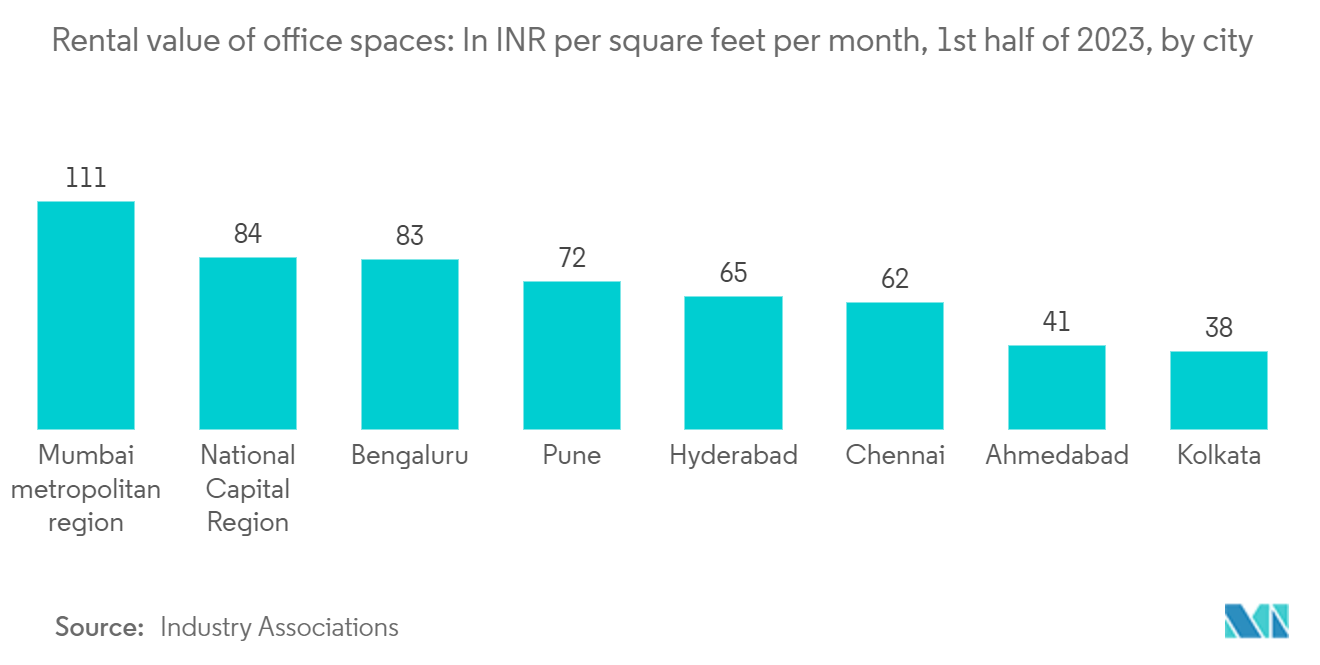Market Trends of Real Estate Industry In India
Increasing Demand for Affordable Housing
- The high demand for affordable housing dominates the housing market. The current shortage of housing in urban areas is estimated to be 10 million units by the India Brand Equity Foundation. An additional 25 million units of affordable housing are required by 2030 to meet the growth in the country's urban population.
- The real estate industry has benefited from the push for policy that has resulted in legislation like the Real Estate Regulatory Authority (RERA), the introduction of Real Estate Investment Trusts (REITs), and housing initiatives like PMAY (Pradhan-Mantri Awas Yojana) and SWAMIH (Special Window for Completion of Construction of Affordable and Mid-Income Housing Projects).
- In 2023, a target of 45,70,082 houses in the West Bengal state of India was allocated by the Ministry of Rural Development. Even though there is a big demand for housing in the country, residential launches have been on a comparatively high level over the past few years. In the financial year 2023-24, the total number of completed houses in urban areas of India under the Pradhan Mantri Awas Yojana (PMAY, The Prime Minister's Housing Plan) reached 1,58,37,128.
- Housing affordability in India was 3.3 in the financial year 2023, as compared to 3.2 in 2022, according to industry experts. As reported by the Reserve Bank of India, in the financial year 2022, banks in India advanced around INR 2 trillion (USD 24.44 billion) in housing loans, almost reaching pre-COVID levels. This reflected renewed homebuyer sentiment, as an increasing number of Indians have been investing in buying residential property, which continues to this day.

Office Real Estate Witnessing Lucrative Growth
- The Indian office real estate market has driven the growth of the commercial real estate sector in the past decades. Once dominated by information technology, office spaces are being increasingly leased by other sectors such as BFSI (banking, financial services, and insurance), engineering, manufacturing, e-commerce, and co-working sectors. The sector has demonstrated consistently low vacancy and high absorption rates.
- The Indian city of Bengaluru was estimated to have the highest net absorption among grade-A office spaces in the Asia-Pacific region. In the first quarter of 2022, the central business district (CBD) was the most expensive area for renting office space in Bengaluru, with a rental rate of INR 144 (USD 1.76) per square foot per month, according to industry experts.
- Commercial real estate investments have increased as a result of the Real Estate Regulation & Development Act (RERA) and Real Estate Investment Trusts (REITs). REIT owns, manages, and funds income-producing real estate. Office properties have emerged as the most popular sector for investment among high-net-worth individuals (HNI) in India and international PE investors, who together represent the majority of all equity investments in Indian real estate. Investors of all stripes are drawn to this industry by the high rental rates and better profits. Smaller homes and larger families contributed to the country's increase in flex and co-working spaces.
- According to industry experts in the first quarter of 2022, the Bandra-Kurla complex was the most expensive area for renting office space in the Indian city of Mumbai, with a rental rate of around INR 276 (USD 3.36) per square foot per month. Navi Mumbai offered office space at the lowest rate of around INR 67 (USD 0.82) per square foot per month among all sub-markets of Mumbai. The average rent for Mumbai office market space was around INR 138(USD 1.68) per square foot per month.


